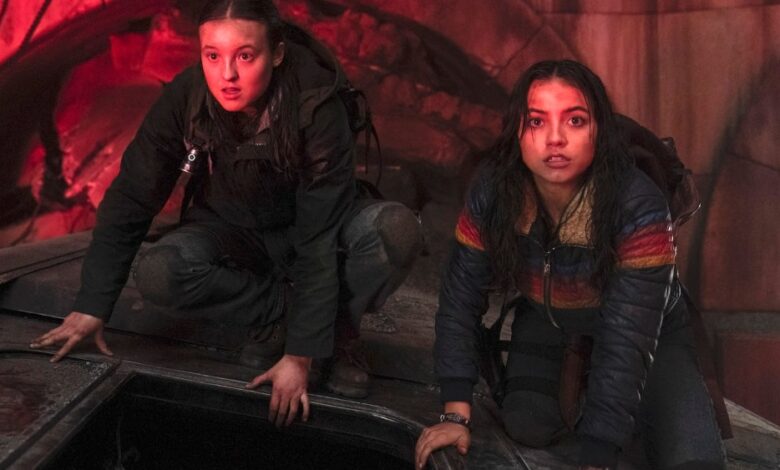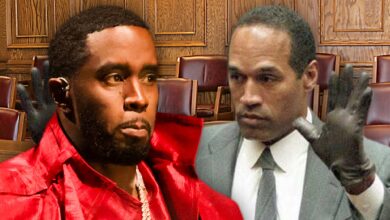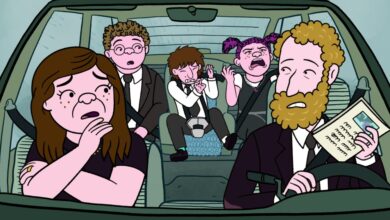‘The Last of Us’ Episode 4 Director on Dina’s Bisexuality, Isaac Introduction

Herron’s episode of “The Last of Us” Season 2, titled “Day One,” is a thrilling and emotional rollercoaster that dives deep into the relationship between Ellie and Dina. As a dedicated fan of the video games and the HBO adaptation, Herron was thrilled to have the opportunity to direct an episode of the series.
In “Day One,” Ellie and Dina set out on a mission to find the Wolves who killed Joel, encountering various obstacles and challenges along the way. From a heartwarming moment in a music shop to a terrifying encounter with the infected in a subway station, the episode is packed with action and emotion. The pivotal moment comes when Ellie reveals her immunity to the infection and Dina confesses her feelings for her, leading to a powerful and intimate moment between the two characters.
Herron’s approach to the episode focused on capturing the complexity of Ellie and Dina’s relationship, as well as the larger conflict unfolding in Seattle. She worked closely with series creators Craig Mazin and Neil Druckmann to ensure that the episode stayed true to the core themes of the series while also allowing room for character development and emotional depth.
One of the key moments in the episode is Ellie and Dina finally acting on their feelings for each other. Herron wanted to capture the raw emotion and vulnerability of this moment, showing the characters as young people in a difficult and dangerous world. The scene in the music shop, where Ellie sings to Dina, is a rare moment of peace and connection amidst the chaos of their journey.
Overall, Herron’s episode of “The Last of Us” showcases her talent as a director and her deep understanding of the source material. Her dedication to bringing the characters and story to life in a meaningful and authentic way is evident in every frame of the episode. Fans of the series can look forward to more thrilling and emotional moments as the season continues to unfold. The challenge there was to make sure that the audience could connect with the rookie and feel his confusion and fear as he navigates this unfamiliar and dangerous world. We wanted to make sure that even though the audience may not recognize the characters on screen at first, they could still empathize with them and understand their struggles.
Overall, the sequence in the theater was a pivotal moment in the relationship between Dina and Ellie. The emotional intensity of the scene, from Dina holding Ellie at gunpoint to their intimate moment together, was a testament to the incredible performances of Bella Ramsey and Izzy King. Their chemistry and dedication to their roles truly brought the scene to life.
Furthermore, the exploration of Dina’s bisexuality and her relationship with her mother added another layer of depth to the episode. It was refreshing to see a character express their sexuality so matter-of-factly, and I hope that Dina’s story resonates with many viewers.
Adapting the visuals from the game to the show for sequences like the TV station and subway tunnels was a challenge, but one that I embraced wholeheartedly. The change from day to night added a new level of intensity to the scenes, and I wanted to ensure that we captured the same sense of fear and tension that players experienced in the game.
Working with Jeffrey Wright, who reprised his role as Isaac from the video game, was a privilege. His experience with the character added depth to his performance, and I appreciated his willingness to explore different options and emotions in the scenes we worked on together.
Overall, the sequence in the theater was a culmination of the emotional journey that Dina and Ellie had been on throughout the episode. It was a moment of vulnerability and trust between the characters, and I believe that their relationship will only continue to evolve and deepen as the series progresses. The latest episode of “The Last of Us” has left viewers with more questions than answers, especially regarding the character of Isaac. As the show delves deeper into the theme of choice, it becomes clear that there is much more to be revealed about this mysterious figure.
One of the most intense sequences in the episode involves Isaac torturing a naked Seraphite, played by Ryan Masson. The raw vulnerability of the scene raises questions about the process of filming such a harrowing moment. Director of the episode explains that there was an intimacy coordinator on set to ensure the well-being of all involved, especially the actor in the vulnerable position. The importance of portraying the gravity of Isaac’s actions is emphasized, highlighting the dark depths of his character.
In a recent interview, the director also shared updates on the highly anticipated feature film adaptation of “The Sims.” While details are scarce, it is clear that progress is being made on bringing the beloved game to the big screen. The director’s experience with “The Last of Us” has undoubtedly influenced his approach to the film, as he continues to hone his craft and learn from the talented team behind the show.
One key takeaway from his time on the show is the use of character thoughts in the script, a technique employed by writer Craig. This unique approach has inspired the director to incorporate it into his own writing, adding depth and complexity to his storytelling.
As the audience eagerly awaits more revelations about Isaac and the unfolding story of “The Last of Us,” it is clear that the show’s exploration of choice and consequence will continue to captivate viewers. With each episode, more pieces of the puzzle are revealed, keeping fans on the edge of their seats. The director’s passion for storytelling shines through in every frame, promising an unforgettable viewing experience for all.





